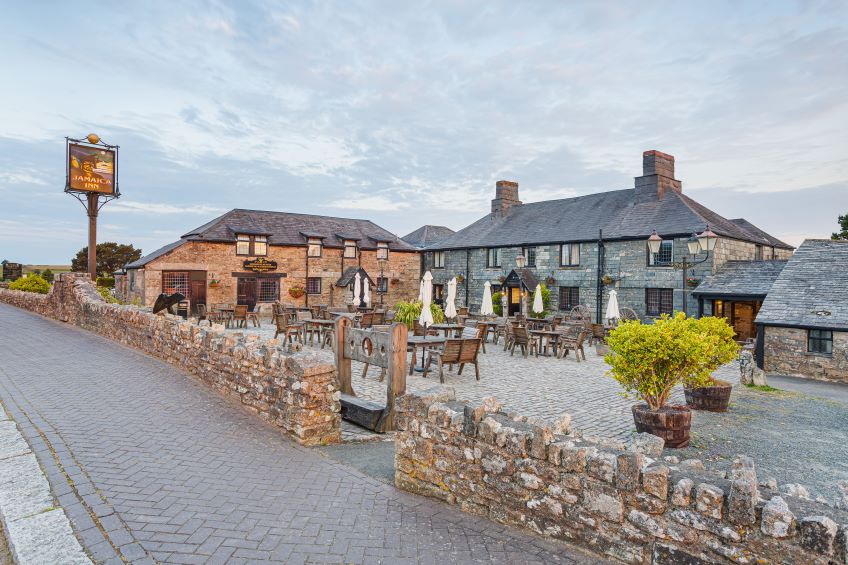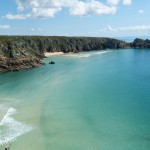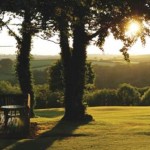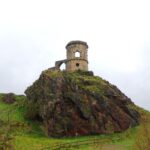Waves of mist were drifting in across the bleakness of Bodmin Moor as my wife Jenny and I pulled into the car park of the famous Jamaica Inn.
It was instantly obvious to see how famous authoress Daphne du Maurier was inspired to write her novel of the same name after she and a friend became lost while out riding on the moor and were guided back to the remote inn by their horses.
And one has only to step inside to experience the heady atmosphere of smugglers and daring do, surrounded by pictures and memorabilia of those days of the 1780s when smugglers evaded the excise men to land a quarter of the tea and half the elicit brandy in secluded bays all along the northern coasts of Cornwall and neighbouring Devon.
Indeed, fact then became merged with fiction when I spotted a brass plaque on the floor of the bar marking the spot where Du Maurier’s drunken and remorseful inn keeper and master smuggler Joss Merlyn was murdered.
Moving closer to more recent times I was surprised to read how another famous novelist Alaistair Maclean of HMS Ulysses fame purchased the Jamaica Inn in 1962 and enlisted the support of his master mariner brother to oversee its running.
Apparently, he had become tired of writing his twenty-nine action-packed novels and had decided to become a hotelier instead and also acquired two others in Somerset and Worcestershire.
A grant in 1972 enabled him to redevelop more of a stable block and the inn became an hotel, but in the eleven years he owned the property he only stayed once for three days when he was described as a real gentleman.

After an excellent dinner and a comfortable night in a room with a long view towards Brown Willy, or the Hill of Sparrows, the highest point on the moor at 1,378ft, we had breakfast, and it took just a thirty-minute drive to reach the fabulous Eden Project.
Here six spectacular Biomes seemingly sprouting mushroom like out of a giant former clay pit, house one of the largest rainforests in captivity.
Now we wandered around wild and cultivated exterior landscapes being drawn further into the pit before entering the Biome complex and escaping into the steamy tropics.
This was followed by a gentler passage through the adjoining Mediterranean Biome to take in the sights, scent and stories from that part of the world followed by those of California, South Africa and Western Australia.
I was disturbed to learn that an area the size of the canopy above our heads was destroyed every eleven seconds so releasing around three thousand tonnes of stored carbon back into the air as CO2.
It was also interesting to read that the wasps one was most likely to see were the common ones which nested together in colonies.
While they might often appear to be annoying and liable to sting, they also preyed on other pests and consumed thousands of tonnes of them every summer, we were told.
Since opening its doors to the world in March 2001, more than eighteen million people have visited The Eden Project and its originator Tim Smit has received a knighthood for delivering his astonishing vision.
Although I had previously seen aerial pictures of the Eden Project, I had still experienced the wow factor when visiting for the first time. But I certainly never expected to enjoy a similar experience just a couple of hours later when on our way back to the inn, we called in to the National Trust’s Lanhydrock House and Gardens!

Having presented our membership cards and been given a map, we were instructed to follow the footpath down through a magnificent sweep of open parkland with a backdrop of trees cloaked in bright spring green to reach the house.
This delightful walk took about five anticipatory minutes and then around a slight bend in the path we came upon one of the most visually outstanding National Trust properties I have ever seen.
First built back in the 17th century, one wing of the mansion was destroyed in a devastating fire in 1881 and then rebuilt in the Victorian style to become the home of the wealthy Agar-Robartes family whose earlier fortunes had been based on the Cornish tin mining industry.
Here one is able to step back in history and follow the daily lives of the family through a series of furnished rooms.
Meanwhile on the other side of the house visitors can enter the long gallery with its masterpiece of Jacobean plasterwork and watch conservators at work on a major project to clean and restore it.
It was almost closing time when we hurriedly retraced our steps up the long path to the carpark and drove back to the inn for tea and a spot of rest and recuperation.

The following morning it was time to go off and visit the privately owned Pencarrow House and garden, a magnificent Georgian mansion tucked away on the edge of Bodmin Moor and again no more than a thirty-minute drive from the Jamaica Inn.
Peacocks were calling when we drove down the leafy drive to the house which has been in the Molesworth-St Aubyns family for almost five hundred years.
While a formal Italian garden is laid out in front of the mansion, there are a series of delightful woodland walks leading up a natural valley to a sheltered lake.
We just had enough time to complete a leisurely circuit before joining a tour of the house full of oil paintings, lovely old furnishings, framed family photographs and other memorabilia going back through the generations.
We lunched on delicious home-made quiche and focaccia under a sun umbrella in the mansion’s cafe garden before driving back to the Jamaica Inn where another treat by way of a trip into the past was in store.
For here we spent another fascinating hour looking around the inn’s famous museum packed with Daphne du Maurier memorabilia and hundreds of artefacts celebrating Cornwall’s smuggling past.




